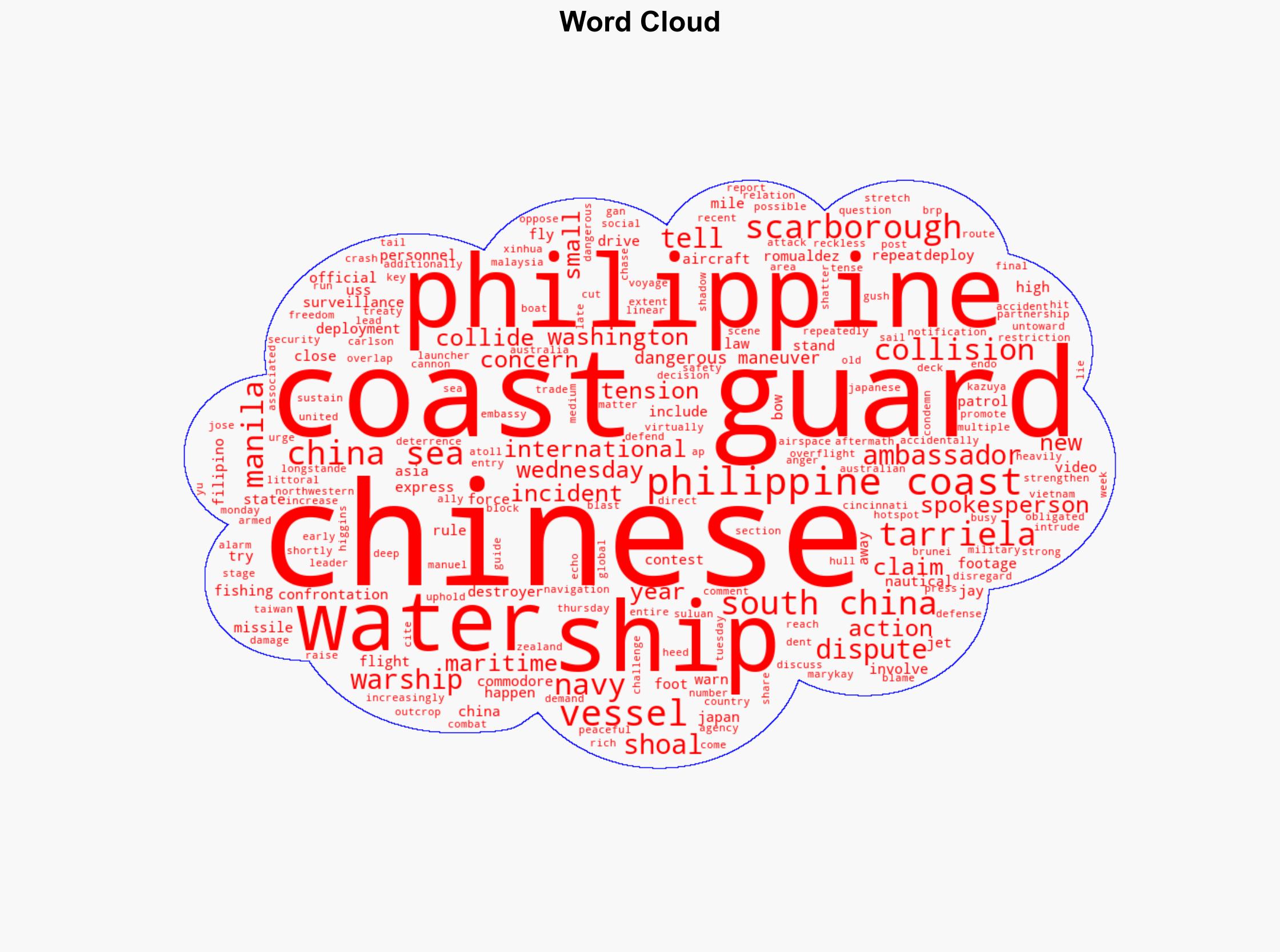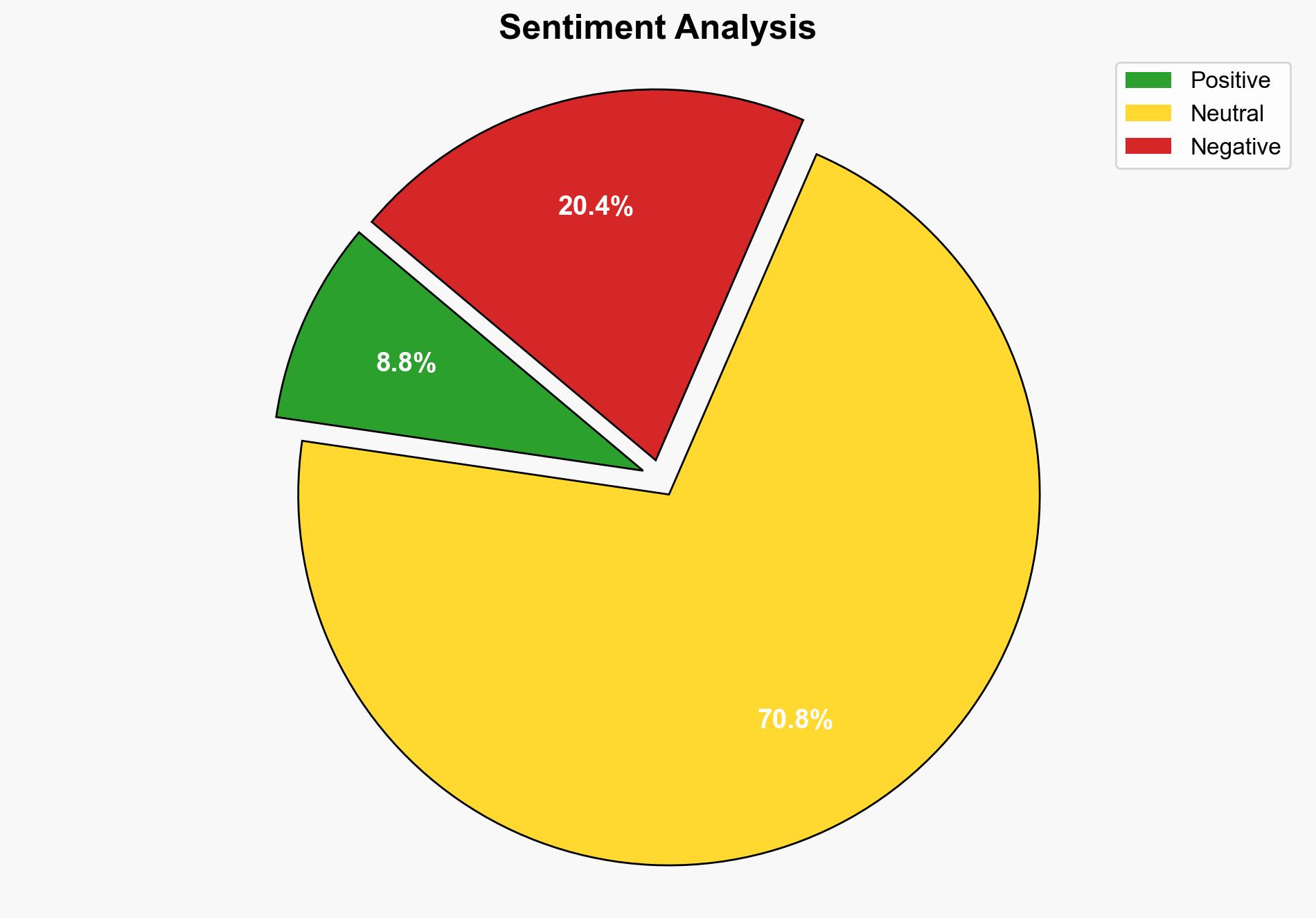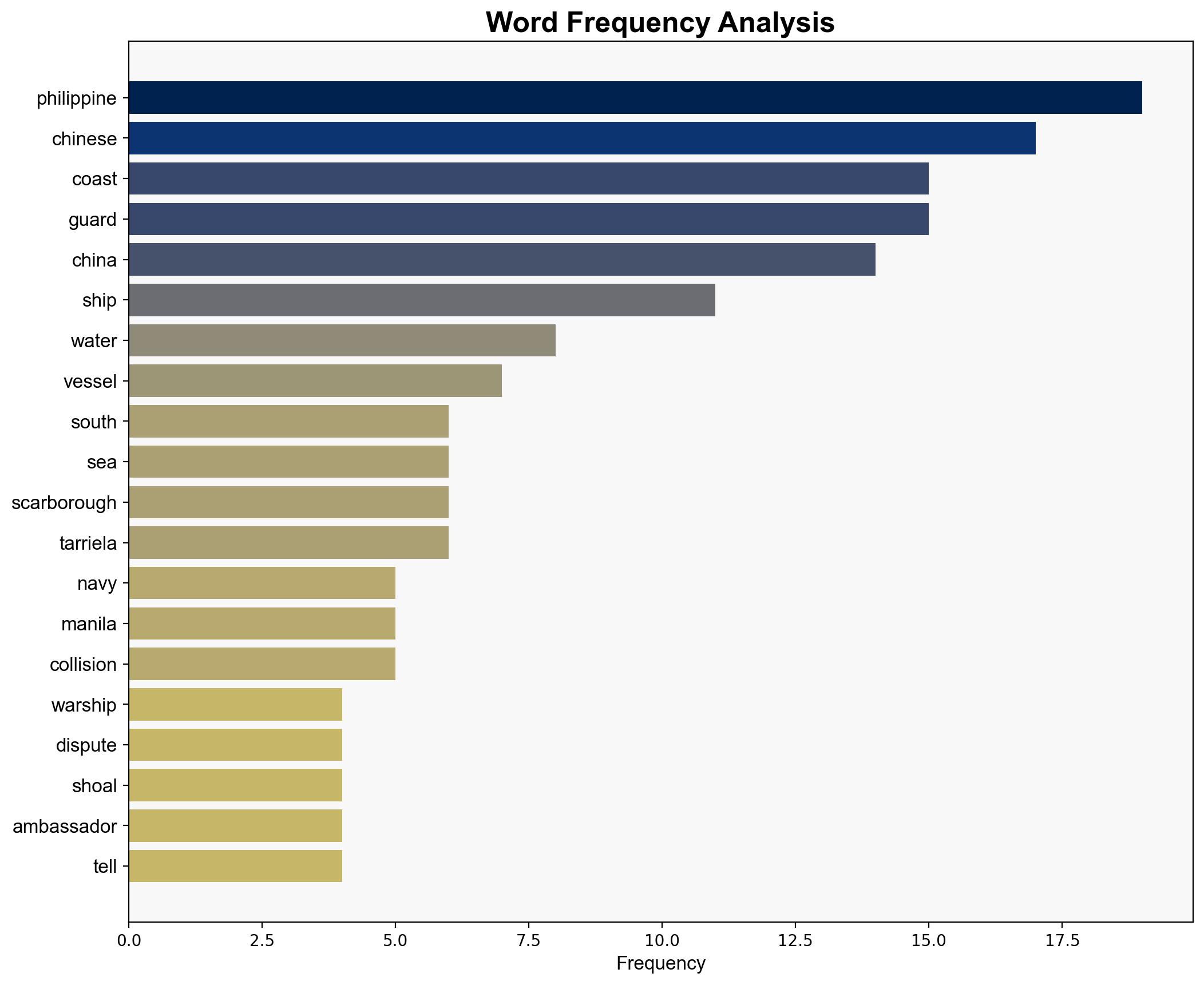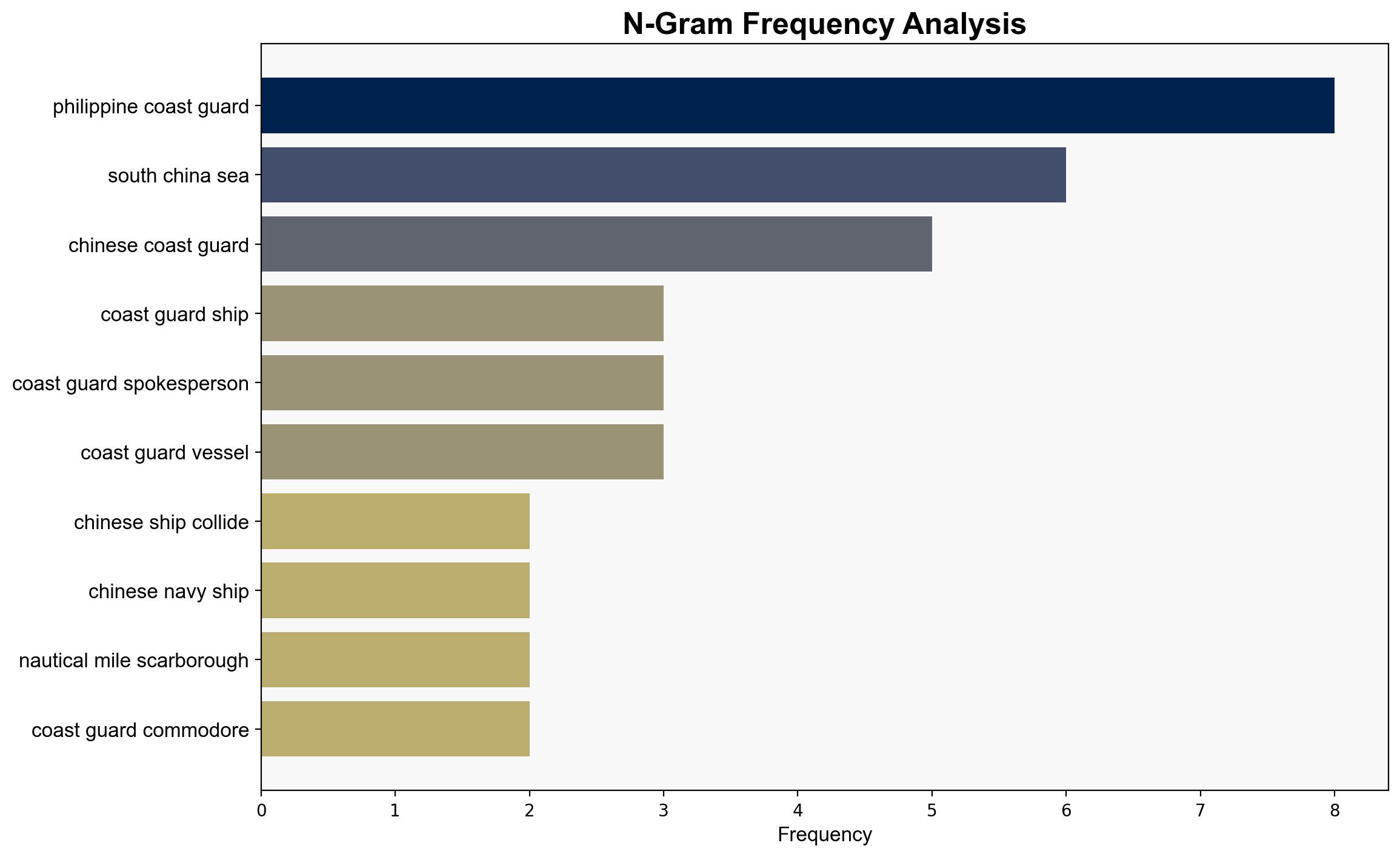2 US warships deployed to disputed waters after Chinese ships collided – Hoover.org
Published on: 2025-08-17
Intelligence Report: 2 US warships deployed to disputed waters after Chinese ships collided – Hoover.org
1. BLUF (Bottom Line Up Front)
The deployment of US warships to the South China Sea following a collision involving Chinese and Philippine vessels signifies heightened tensions and a potential escalation in regional maritime disputes. The most supported hypothesis suggests that the US aims to deter further aggressive actions by China and reassure regional allies. Confidence level: Moderate. Recommended action: Increase diplomatic engagement with regional partners and reinforce international maritime law adherence.
2. Competing Hypotheses
1. **Deterrence and Assurance Hypothesis**: The US deployment is intended to deter further Chinese aggression and assure allies of US commitment to regional security and freedom of navigation.
2. **Escalation and Confrontation Hypothesis**: The deployment is a strategic maneuver by the US to provoke a response from China, potentially escalating tensions to justify increased military presence in the region.
Using ACH 2.0, the Deterrence and Assurance Hypothesis is better supported by the US’s historical pattern of conducting freedom of navigation operations and the diplomatic statements emphasizing international law adherence.
3. Key Assumptions and Red Flags
– **Assumptions**: The US is committed to maintaining freedom of navigation and supporting allies in the region. China views US military presence as a provocation.
– **Red Flags**: Lack of direct communication between US and Chinese military leaders could lead to misinterpretation of actions. Potential bias in reporting from involved parties, such as the Chinese state media.
– **Blind Spots**: The internal decision-making processes within China regarding their maritime strategy remain opaque.
4. Implications and Strategic Risks
– **Escalation Risks**: Increased military presence may lead to accidental confrontations or miscalculations, escalating into broader conflict.
– **Geopolitical Impact**: Strained US-China relations could impact global trade routes and regional alliances.
– **Economic Consequences**: Disruptions in the South China Sea could affect global shipping and trade, impacting economies reliant on these routes.
5. Recommendations and Outlook
- Enhance diplomatic channels with China to prevent miscommunication and manage escalation risks.
- Strengthen alliances with regional partners through joint exercises and intelligence sharing.
- Scenario Projections:
- Best Case: De-escalation through diplomatic engagement and adherence to international maritime law.
- Worst Case: Military confrontation leading to regional instability and global economic disruption.
- Most Likely: Continued tensions with periodic diplomatic engagements to manage disputes.
6. Key Individuals and Entities
– MaryKay Carlson
– Jay Tarriela
– Jose Manuel Romualdez
– Gan Yu
7. Thematic Tags
national security threats, regional focus, maritime security, US-China relations





